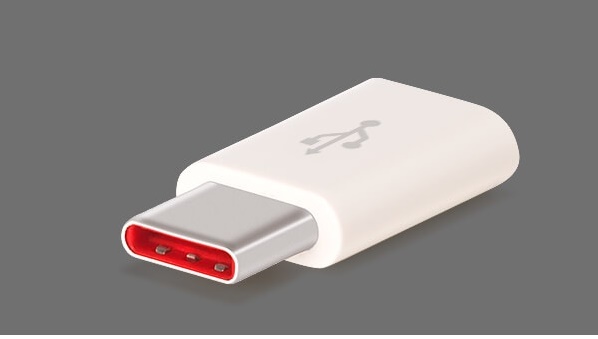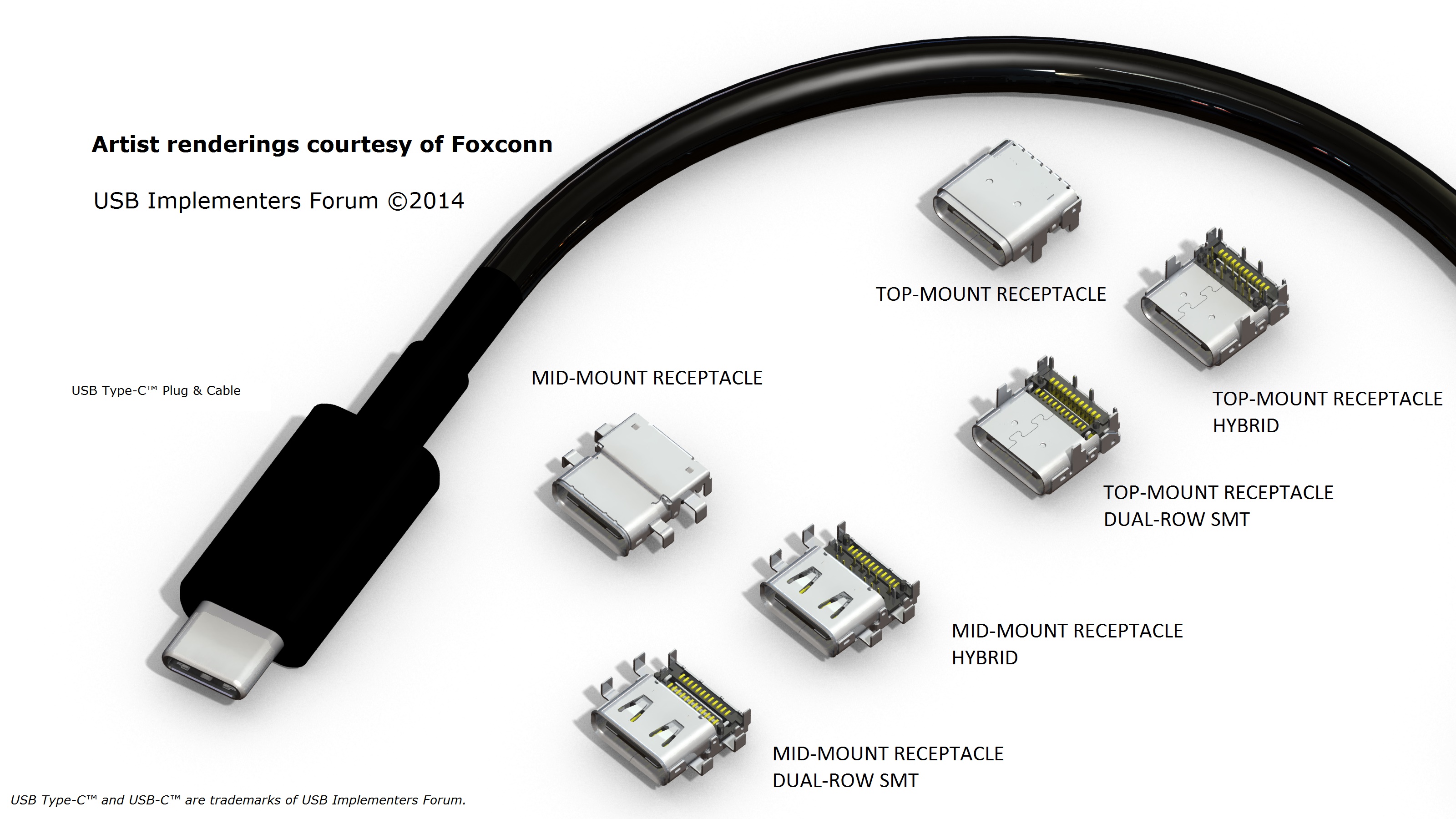 One of those great electronics industry leaps forward has arrived, and may drive you to some new device choices over the next couple of years. It’s full of promise, but may also leave you saddled with a host of incompatible devices, chargers, connectors, and adapters. Sounds like the Lightning connector saga all over again, but in fact Apple is one of the early adopters this time. So what will it mean for your mobile gadgets, ereading devices, smartphones, and tablets? Will you want it?
One of those great electronics industry leaps forward has arrived, and may drive you to some new device choices over the next couple of years. It’s full of promise, but may also leave you saddled with a host of incompatible devices, chargers, connectors, and adapters. Sounds like the Lightning connector saga all over again, but in fact Apple is one of the early adopters this time. So what will it mean for your mobile gadgets, ereading devices, smartphones, and tablets? Will you want it?
The Universal Serial Bus Type-C Cable and Connector Specification, or USB Type-C for short, is a standard for a 24-pin double-sided connector similar to the micro-B USB connector, but designed to be future-proofed, and with hugely enhanced capabilities versus the old micro USB standard. For one thing, it’s not a mini or micro cutdown of full USB. The USB Type-C connector is the full connector, with all functions intact. Furthermore, it acts as the hardware end for other important new USB protocols, such as USB 3.1, which increases USB’s bandwidth to 10 Gbit/s, and USB Power Delivery, which allows Type-C connectors to carry up to 100 watts. USB Type-C can also carry HDMI, DisplayPort, VGA, and in principle, Ethernet. It’s definitely One Plug To Rule Them All.
The first USB Type-C devices are already rolling out. Apple, for once, set the pace for universal forward-looking connectivity by implementing USB Type-C as the power adapter port for its 2015 Apple MacBook. To quote Apple, “the new USB‑C port puts just about everything you need in a port all in one place. This amazing port provides charging, speedy USB 3 data transfer, and video output in a small, reversible design that’s one-third the size of the current USB port.” The MacBook’s superb thin-and-light design owes something to USB Type-C, because it doesn’t have to incorporate old style USB connectors or even a Lightning port. VGA and HDMI video output over the USB Type-C cable for now requires separate adapters, but in time, displays will also have USB Type-C sockets.
Other USB Type-C devices coming to market include the OnePlus 2 phone, which makes great play of its market-leading tech and design in this and other areas, and Google’s Chromebook Pixel 2015. To show the way things are likely to go, OnePlus is already offering its own USB Type-C adapter for just $9.99, to connect your legacy full-size USB devices (see picture above). However, Samsung, the world’s Number One smartphone manufacturer, appears to be sticking to micro USB at least for now, with its next-gen flagship, the Samsung Galaxy S7.
Samsung’s backward-looking design choice indicates how things are likely to go for the next couple of years, with the micro USB and USB Type-C standards overlapping. For one thing, USB Type-C doesn’t automatically mean USB 3.1 or USB Power Delivery – it simply provides the socket for those devices that implement those standards. It’ll be interesting to see what the next big milestones in USB Type-C adoption are. Will the next iPhone have one? (Hard to imagine, with all the bucks now invested in Lightning, but who knows?) Will Amazon put USB Type-C into the next version of its $50 Fire tablet? With full HDMI output, surely Amazon would love to use USB Type-C to deliver its video offerings.
As for you, will you want it? Of course you will. Will you love streaming HDMI-quality video from your smartphone or tablet’s USB port? Of course you will. Will you love being able to power your smartphone and your laptop/desktop/convertible from the same small power adapter? Of course you will. Will you grumble at the slew of incompatible older devices and chargers that need micro USB-to-USB Type-C or USB Type-C-to-big-old-USB adapters? Of course you will …

































Apple, in its obsession with thin, is also the first to showcase the enormous downside to USB-C. The fact that it can connect anything to your primary device gives Apple’s artsy Jonathan Ives and the company’s bean counters all the excuse they needed to cut the port count on the latest MacBook to a miserly one. (My aging white MacBook has eight, all of them useful.)
Yes, that simplicity itself, at least until you actually have to use it. Then you’ve got to lug around a host of adapters not just to connect a certain device (say a mike) to your device, but to connect multiple devices at the same time.
Want to charge your laptop and record sound at the same time? On most current laptops that’s as easy as pie. The power and mike inputs are separate ports. On these new devices, you’ll need a special adapter to connect two gadgets at once. Few gadgets will work without those adapters, which will make travel an utter pain. You’ll go to a conference, and find a critical adapter was left behind, a thousand miles away.
True, there will be gadgets such as this one to deal with those ills:
https://eshop.macsales.com/preorder/OWC-USB-C-Dock/
The $150 price is probably reasonable for what it offers. But that’s $150 you don’t have to spend with current laptops. You pay $150 so Apple and others don’t have to pay $5-10 to add more ports and so Ives can continue his neurotic obsession with thin.
What ticks me off is that Apple and most of their Silicon Vally colleagues who’re make similar moves think that all of us out here in “fly-over country” aren’t bright enough to see the nuisance and costly downside to USB-C, to soldered-in RAM, and the glued in batteries that make replacement a pain. “Your battery dies,” they think, “oh well, its time to upgrade.” Hey, I don’t get a new car when its battery dies. Why should I do the same with my iPad or MacBook Air?
They (and not just Apple) really do regard us as being like the Eloi in H. G. Wells’ The Time Machine.
https://en.wikipedia.org/wiki/Eloi
This description of them almost sounds like one of the guidelines for Apple advertising: “They do not perform much work, except to feed, play, and mate.” That covers at least 90% of Apple’s advertising. Even when they show people working, it’s the sort of work that is more like play. Nothing gritty or dirty. Nothing that takes physical effort.
—-
That’s why many work-a-day people I know loathe Apple. It seems to make products for people who have nothing to do but listen to music, watch TV, dance about, and take pictures while traveling.
Microsoft is the company for their kind of people:
http://www.discovery.com/tv-shows/dirty-jobs/
I’ve worked for Microsoft. It’s not really that different from Apple at the employee level. But it does have the sense to make products for people who work in offices as opposed those who play away their lives.
Compare Mike Rowe on that Discovery show with Jonathan Ives babbling on about how an iPhone “feels in your hand.”
https://www.youtube.com/watch?v=7h5_eLcsHAY
Message to Ives: “I don’t really care if the fit on my smartphone is to 0.001 inches or 0.01 inches. My eyes can’t even see the difference. I want a practical tool for work so I can pay my bills, not a high-priced toy for those living a shallow Ken and Barbie lifestyle.
——-
For the record, I don’t mind USB-C. I do mind having but one of those ports and no other kind, with all the trouble and expense that imposes on users. Apple and the rest are pinching pennies on what matters to fatten their already enormous profits and as a result imposing additional costs on users. That’s the nproblem here. New needs to be better in every way not merely new.
–Mike Perry
Great article, thanks. Explained USB Type-C quite nicely.